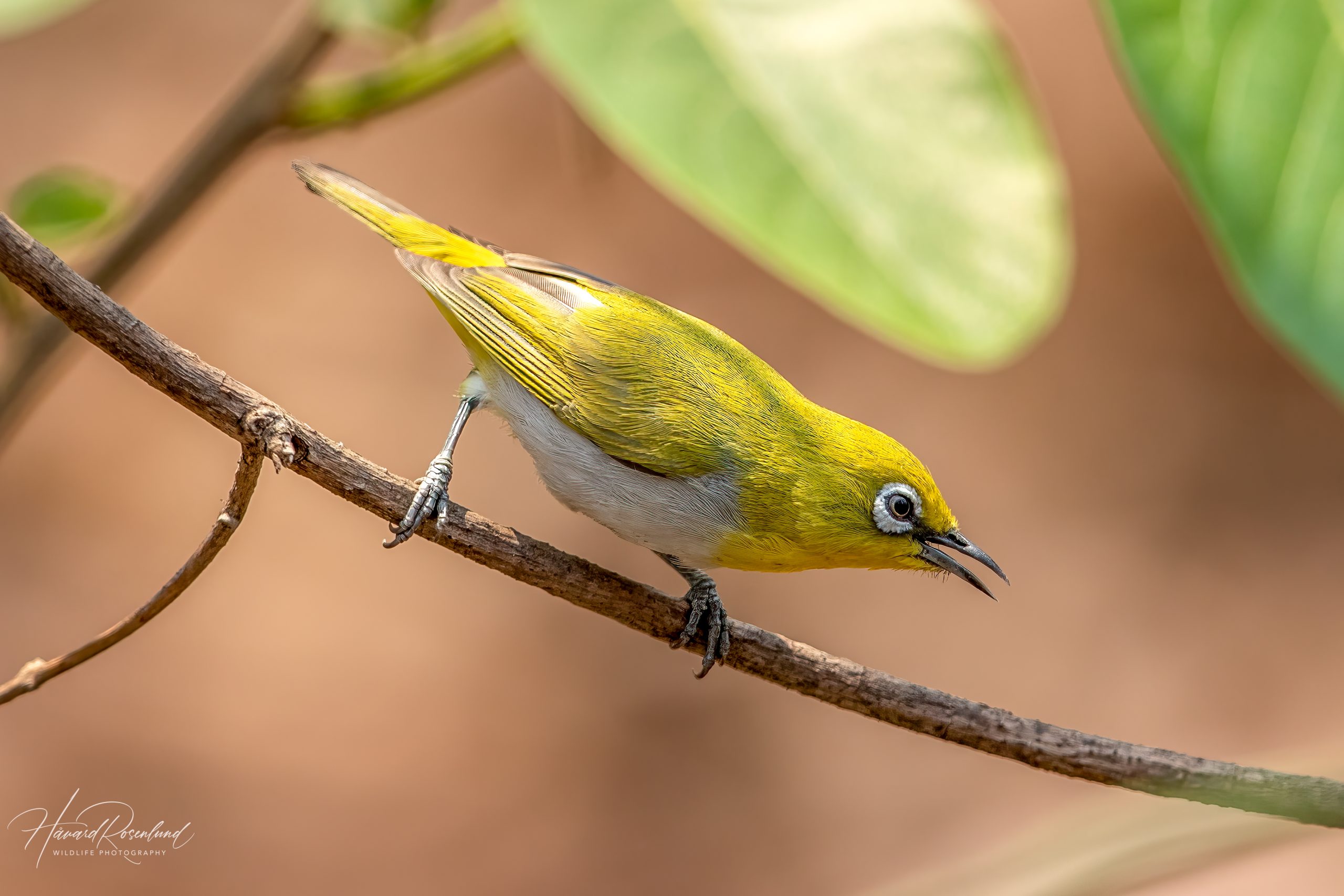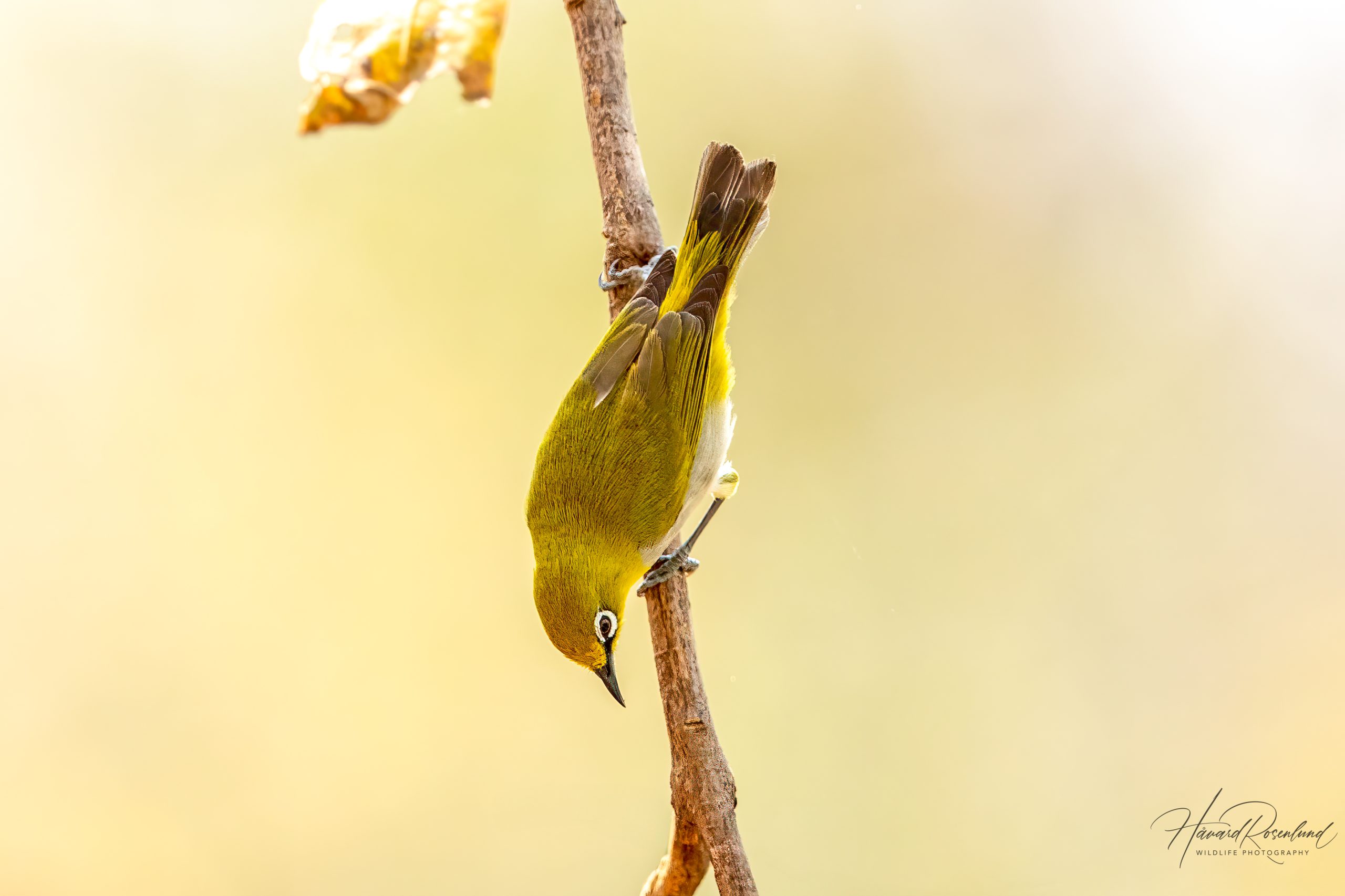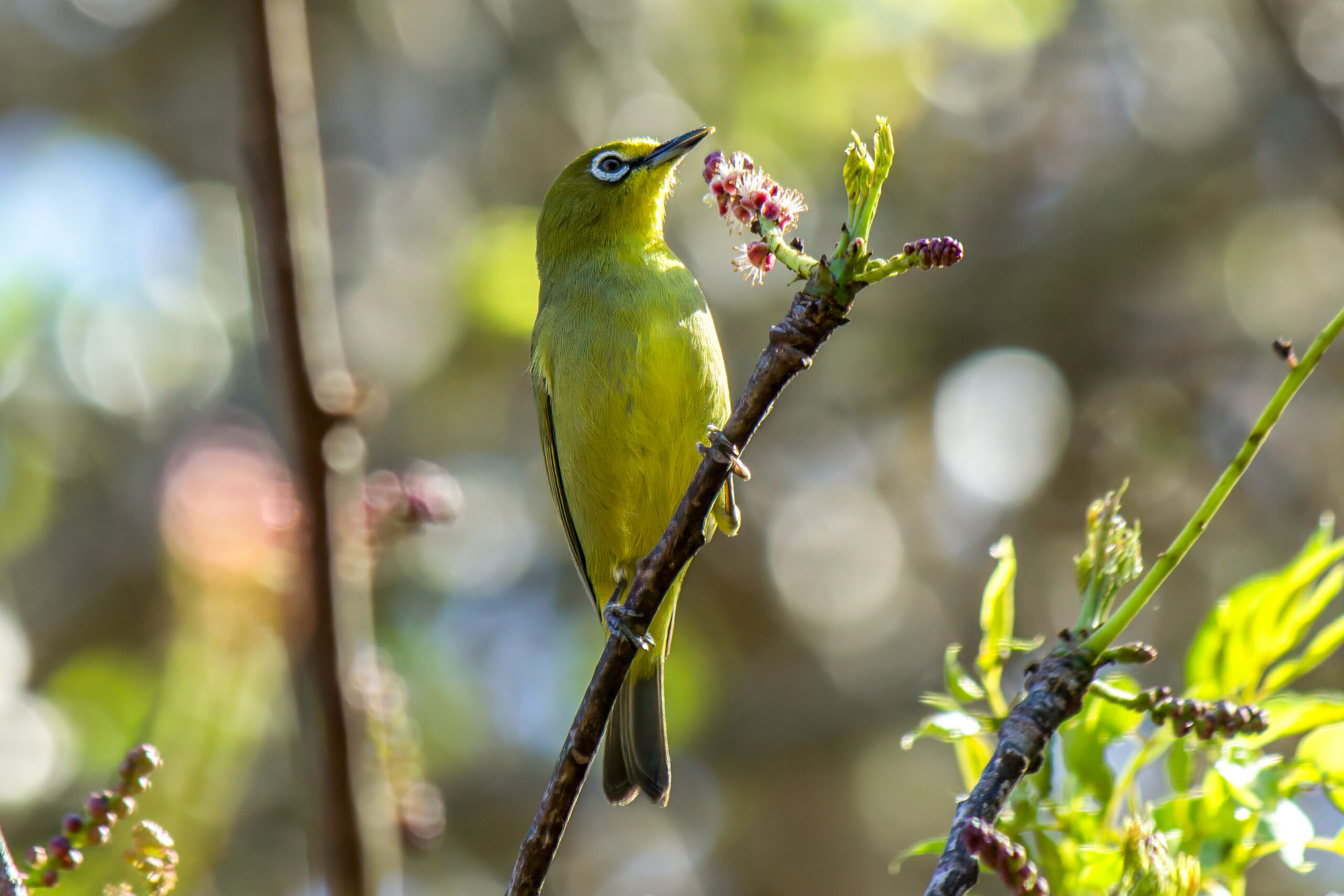Indian White-eye
(Zosterops palpebrosus)
Description
The Indian white-eye (Zosterops palpebrosus), also known as the Oriental white-eye, is a small colorful passerine bird widely distributed across South Asia, extending into Southeast Asia and parts of China. It measures around 8-9 cm (3.0-3.5 in) in length and weighs approximately 6-10 grams (0.21-0-35 oz), making it a tiny but agile species. This bird is easily recognizable by its bright yellow-green upperparts, pale grey underparts, and the conspicuous white ring around its eyes, which gives the species its name. The bill is slender and slightly curved, adapted for its feeding habits.
This species is one of several similar-looking white-eyes found across the Old World tropics and subtropics, but it is the only found on the Indian subcontinent’s mainland. Where it overlaps with other species, such as Sri Lanka and parts of Southeast Asia, the Indian white-eye typically has yellower upperparts, is slightly smaller, and mostly found in different habitats.
Diet & habitat
The Indian white-eye thrives in a diverse range of habitats, including woodlands, scrublands, and even urban parks and gardens. It is a highly adaptable species, able to live in both natural and modified landscapes. In terms of diet, this bird primarily feeds on a variety of insects and spiders, which it forages from the foliage of trees and shrubs. Additionally, it consumes nectar, pollen, and soft fruits, making it an important pollinator for certain plant species. The white-eye is known for its acrobatic feeding behavior, often seen hanging upside down or flitting through dense foliage in search of food. This species often feeds in flocks, which helps reduce the risk of predation.
Nesting
The breeding season of the Indian white-eye varies across its range but generally occurs during the warmer months from February to September. This species is known for its elaborate nesting behavior. The female constructs a small, cup-shaped nest out of fine grasses, fibers, and spider webs, typically placed in a fork of a small tree or shrub. Both parents are involved in incubating the eggs, which are usually 2-4 in number. The incubation period lasts around 10-12 days. Once hatched, the chicks are altricial, meaning they are born naked and helpless, requiring constant care from both parents. The fledging period is relatively short, with young birds leaving the nest about 10-12 days after hatching, though they continue to be fed by the parents for some time afterward.
Status
The Indian white-eye is currently classified as a species of least concern by the IUCN Red List, indicating that it is not currently at significant risk of extinction. This species’ adaptability to various habitats, including human-altered environments, has helped it maintain stable population numbers across its range.
Despite its current status, localized threats include habitat destruction due to urbanization and agricultural expansion. Additionally, in some regions, the capture of these birds for the pet trade poses a potential risk. However, the overall population remains robust, and the species continues to be widespread and common in its native range.






